Life in Mount Athos appears to be incomprehensible to a man of the outside world, as it is radically different from the worldly reality. Everything there aims to a transcendental goal, the removal of the vanity cultivated by human and the achievement of connecting with God.
ATHONITE MONKS
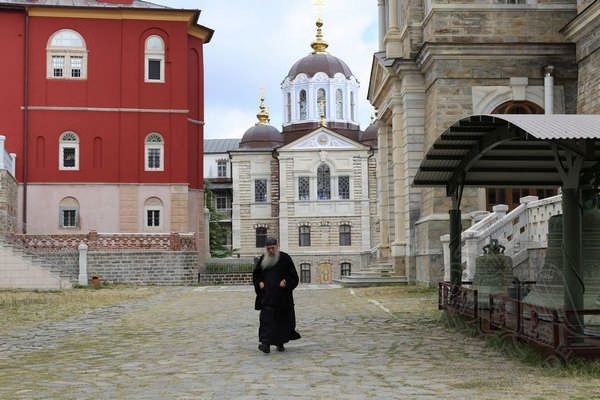
The monks of Mount Athos are citizens of the Greek state. Foreign citizens who arrive on the peninsula from other countries and decide to become members of the monastic community, automatically receive the Greek citizenship. They are all exempt from military service.
Every Orthodox Christian can become a monk from the age of 18. To do so, he must enter the monastery of his choice, appear before the abbot and declare his voluntary desire to dedicate himself to the monastic life. It is also possible to declare one's decision to the elder of a metochion of Mount Athos.
In any case, from that moment onwards, the person is considered to be a novice monk. The duration of the period of obedience, according to ancient traditions, is set at three years. However, today it is often limited to two or even one year. The novice wears a robe with a leather belt and performs the tasks assigned to him or her. The main task of the elder is to prepare the novice for a community life and for his dedication to God.
At the end of that period of obedience, if the novice remains firm in his decision and is judged worthy by his elder, the priest invites him to the church of the monastery or metochion. There he reads a blessing and the ceremony of the monastic initiation takes place. Monks who have followed this procedure are called hieromonks and represent the first degree of monasticism. They can still return to their secular life without any special consequences. Those who wish to do so can continue their spiritual journey and receive the blessing of the Small Schema. As celibate monks they enter the royal gate, where they appear before the abbot and declare their desire to continue their monastic path. They take a vow of celibacy, poverty and obedience.
Through the above rituals, the monk renounces the world. He loses his surname, which is a link to his family and which is replaced by the name of the monastery where he belongs. As for his first name, he keeps only the first letter of it.
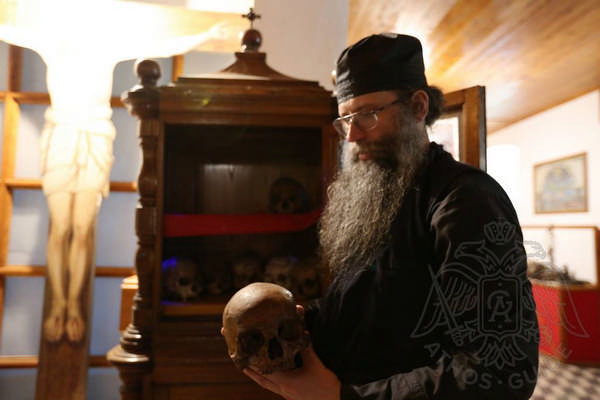
The three vows the monk is called upon to take are linked to the three basic virtues: celibacy, obedience and poverty. Violation of the requirement of celibacy is punished by loss of monastic dignity. As far as obedience is concerned, the monk must observe everything that his elder and the monastic authorities instruct him. He must obey all their instructions without questioning them. In case of disobedience, he is subject to the appropriate punishments. The vow of poverty concerns the period after entering the monastery. If the monk had already property inherited or acquired by his personal work in his secular life, he disposes it in the monastery, in accordance with the principles of Christianity. The property which he acquired during his monastic life is handed over to the monastery after his death.
As far as the monastic initiation is concerned, the shearing of a monk's hair, that takes place during this ceremony, has nowadays taken a symbolic meaning. However, in the past, monks used to cut their hair regularly. Only those who were punished for their disobedience or those who were moving around the peninsula were having long hair.
The third degree is the Great Schema, which is reserved for a few and older monks, as it requires the strictest asceticism. The typical attire of a monk of that level consists of the analavos (a small square cloth garment with the image of the Orthodox cross) and the koukoulion (a monastic headdress). The analavos is nowadays used less, while the head covering is still worn without exception, in the temple as well as in the dining room.
Monks ordained outside the Mount Athos do not belong to any special degree of monasticism. Only the Athonite monks are allowed to follow such a course.
DAILY ROUTINE OF THE MONKS IN MOUNT ATHOS
In Mount Athos there are followed different ways of calculating the year. The monasteries and metochia follow the old Julian calendar, while the Patriarchate has adopted the corrected Gregorian calendar for about 60 years.
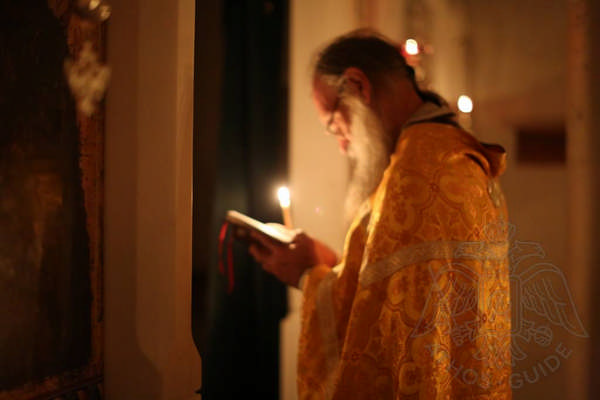
As far as time is concerned, the Holy Monastery of Vatopaidi and the Holy Monastery of Saint Panteleimon follow the usual daily schedule, with the day beginning at midnight. The Holy Monastery of Iviron calculates its day according to the sunrise, while the other 17 monasteries follow the Byzantine clock, according to which the day begins at sunset. Theoretically, these monasteries should change manually their clocks every day, as well as every week, in order to calculate the hours at sunrise or sunset.
The 24-hour life of a monk in Mount Athos is divided into three parts, each of which consists of an eight-hour period. The first is devoted to prayer, the second to work and the third to rest. However, certain activities, such as the study of sacred texts, may take longer than eight hours, as they are considered to be simultaneously time of prayer, rest and work. Also, the time of lunch or dinner is usually included in the rest period.
Below there is indicated the schedule of the two types of monasteries, calculated according to the secular hours.
Timetable of monastic life in Athos
Cenobitic monasteries
|
Midnight |
Awakening |
|
00:05 - 01:00 |
Canon (300 penances) |
|
01:00 - 04:00 |
Morning Service |
|
04:00 - 05:30 |
Recreation |
|
05:30 - 06:00 |
Waking up |
|
06:00 - 07:30 |
Service |
|
07:30 - 08:00 |
Common meal |
|
08:00 - 12:00 |
Obedience |
|
12:00 - 14:00 |
Recreation, study |
|
14:00 - 15:30 |
Obedience |
|
15:30 - 16:30 |
Vespers |
|
16:30 - 17:30 |
Common meal |
|
17:30 - 18:00 |
Recreation |
|
18:00 - 18:30 |
Closing of the gates/Night prayer |
|
19:00 - 24:00 |
Sleep |
Idiorrhythmic monasteries
|
04:00 |
Waking up |
|
04:10 - 06:30 |
Morning Service |
|
06:30 - 07:00 |
Meal in private |
|
07:00 - 10:00 |
Common obedience |
|
10:00 - 12:00 |
Personal obedience, study |
|
12:00 - 13:00 |
Meal in private |
|
13:00 - 15:00 |
Recreation |
|
15:00 - 16:00 |
Vespers and compline |
|
16:00 - 18:00 |
Obedience and study |
|
18:00 - 19:00 |
Meal |
|
19:00 - 21:00 |
Study |
|
21:00 - 22:00 |
Сanon in private |
|
22:00 - 04:00 |
Sleep |
THE HOLY MASS
The prayer of monks, like that of all Orthodox Christians, can be personal or collective.
The foundation of personal prayer is the reference to the name of the Lord: "Lord Jesus Christ, have mercy on me, the sinner". In cenobitic monasteries, prayer is offered by all the monks, who gather in the Katholikon and pray in silence. In idiorrhythmic monasteries, this prayer can be done either privately or in a common space. The monks of those monasteries experience great freedom. Whether their prayer is performed in the temple or in the cell, it encourages their soul to soar to the heights of the clouds. It is a pure, silent and contemplative supplication to the Lord.
Daily prayers include the morning prayer, the midnight prayer, the prayers of the hours (first, third, sixth, ninth) and the prayers of the Mass. All are performed during the night, that is, during the hours when ordinary people are at rest. On feast days the schedule changes radically. On major feasts, which are about 50 each year, 15 hours are set aside for uninterrupted prayer, which begins at 8 p.m. and ends the next morning at 11 a.m.
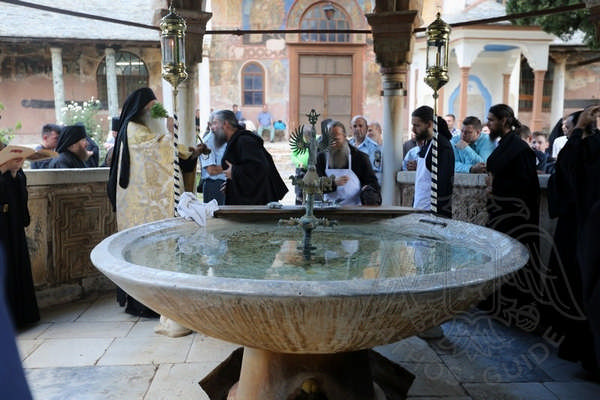
The funeral service is celebrated in all monasteries during the feast days or in memory of great saints. The solemn Divine Liturgy is celebrated in memory of persons or events related to the monasteries, sketes and cells of Mount Athos, as well as in memory of saints who have lived there. Today there are more than 240 martyrs and saints of Mount Athos.
Regarding the musical tradition, it has a long history and owes much to Ioannis Koukouzelis. The latter served at the court of the Byzantine emperor. Around 1300, disillusioned by the secular life, he came to Mount Athos, where his musical talent was highly appreciated. In Athos, more than any other ecclesiastical center, the true Byzantine musical tradition has been preserved. Today it is practiced in certain cells at the edge of the peninsula. Listening to the chanting of the monks is an incomparable spiritual pleasure.
The environment of the monastic churches, their structure, the discreet lighting, the sacred frescoes and the monastic worldview, remain timeless. They manage to elevate above anything perishable and finite the monks, as well as the secular visitors.
Finally, it is important to mention that the monks show special devotion to the Holy Virgin Mary. Each monastery can tell its own legend, which demonstrates the unprecedented care of the Mother of God. Furthermore, many monasteries have miraculous icons of Her. The monks themselves call Mount Athos the "Garden of the Virgin Mary" and consider Her their Queen. She is the only woman on the peninsula.
STUDYING IN THE LIFE OF A MONK

"Write, read, sing, be silent, pray". In Mount Athos, study is a particularly important process. The monks read a lot, as study resembles a substitute for the external world, which they themselves have abandoned. Indeed, it is considered to be an extension of the prayer process, just like writing. When monks write or practice calligraphy, they also pray mentally to God.
They even read texts during the meals. The personal libraries of the monks are always adorned with the Holy Bible and the writings of the Holy Fathers, as they are not intended to be used only in devotional life, but they need to be part of the monk's daily life. It is important that the scriptures are studied also privately. Some people know the contents of the Old and New Testaments by heart. The most recent theological and philosophical works are studied as well. Only a few of the monks read books of other contents. Nevertheless, novels can also be found in local libraries. Since the monastic life is considered to be spiritually superior to the secular life, literature of various content is no longer of interest to the monk, even if reading it is not forbidden.
OBEDIENCE

The monks of Mount Athos work hard. The ascetics in the cells are engaged in agriculture and winemaking, while the inhabitants of the huts are engaged in manual work and arts, such as the production of woodcarving objects. Some cells are also closely linked to music and painting.
Monks in the cenobitic monasteries perform tasks related to all aspects of the monastic life, including worship, maintenance of relics, care of the brotherhood and pilgrims, cultivation of gardens and care of trees. It should be noted that the reduction in the number of monks, as well as the increase in the number of visitors during the summer, makes much more difficult the living conditions. To this end, monasteries with a small number of monks often have to hire people from the outside world in order to fulfill their needs.
Today, some of the responsibilities undertaken by monks in a cenobitic monastery are the following:
- Abbot, secretary, librarian, archivist, deacon, cantor, chanter, guide, storekeeper, cook, baker, doctor, woodcutter, vine grower, gardener, etc.
Undoubtedly, in small monasteries the number of monks is not sufficient. Thus, often one person may perform more than one task at the same time. The monks of the idiorrhythmic monasteries perform similar tasks.
THE DIET OF THE MONKS

The strict diet of the monks does not include a variety of tastes. The basis of the athonite cuisine is bread, olive oil, wine, olives and vegetables.
The monks of the monasteries and most of the kalyves eat twice a day, in the morning and at noon, only on certain days of the week (on Monday, Wednesday and Friday there is only one meal provided daily). During the Great Lent, monks are limited to one meal on each day of the fast. It is also worth noting that food is cooked without the use of oil, which is only allowed on Saturday and Sunday. The monks never eat meat, and fish is only consumed on the days of major feasts.
The fasting of the hesychast monks is even stricter. The monastic diet ensures the maintenance of the necessary physical strength and limits gluttony. The monks of the idiorrhythmic monasteries, cells and some kalyves eat twice a day, following an equally moderate diet. Eating is a sacred process and is considered a continuation of the Divine Liturgy (which is why the buildings of the Trapeza were built so that their entrance is opposite to the entrance of the Katholikon). The monks enter the altar in procession and celebrate each meal with prayer and devotion, while listening to the texts recited by the reader.
ATHONITE HOSPITALITY
All monasteries are charitable organizations. From the very beginning of its creation, the Orthodox church has shown a special interest for people who suffer. It has always taken care of them and tried to serve their needs. Thus, despite the fact that Mount Athos is far away from the world, it constantly makes sure to send its representatives among people.
As for the visitors, they can be divided into several categories. Some of them come to Athos for spiritual rest, others because of the relevance of their studies, some approach out of sheer curiosity and some come to Athos as tourists.
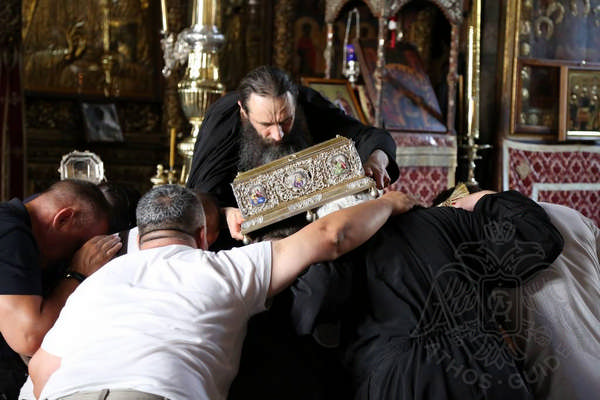
Everyday people have the right to stay in any monastery, as long as the monastery in question can accommodate them. They can stay for as long as they wish, provided they have been accepted and given the corresponding residence permit, the so-called "diamonitirio". The most common length of stay in Mount Athos is four days.
Only Orthodox Christians can be employed as permanent workers. However, the list of jobs offered in Athos is not particularly long. There is usually a need of builders and farmers. Scientists who wish to carry out some relevant research in the libraries and the valuable archives of the monasteries, in the churches and the individual buildings, are also allowed to stay for a longer period, having ensured a special permission from the Patriarchate or the Ministry of Foreign Affairs.
Hospitality is a great vocation for the monks. Visitors are shown around the buildings, libraries and temples, while they also have the chance to venerate the holy relics and treasures of the monasteries. They are given the most precious thing that the athonite fathers possess, their love and care.
